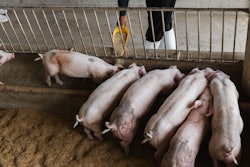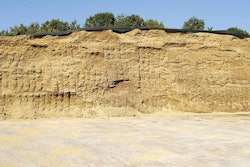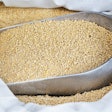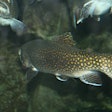
Why is there is a maximum for fava beans but none for corn?
The ingredient database is complete with all relevant nutrient values, and the nutrient specifications for the feed to be formulated are decided and have been entered. Now is the time to hit the “calculate” button on the screen to have the first least-cost formulation solution.
The proposed feed meets all minimum nutrient specifications, but it contains too much salt, in fact it contains way too much salt for any live being. Why is that? The answer is simple: We did not impose a maximum constraint on the sodium (salt is sodium chloride) nutrient and, salt being the least expensive nutrient, the software program filled in any gaps in formulation space with salt – hence the term “least cost.”
How we go about resolving this problem? Salt has a maximum (and minimum) nutrient specification that we can enter. What about fava beans or any other ingredient with largely unknown concentrations of anti-nutritional factors? Can we allow the software to pull in as much fava beans as it desires to meet, say, the minimum protein constraint, or should we restrict fava beans to, say, 10% in the final feed and allow the rest of the protein to be covered by a more benign protein source?
How to limit ingredient usage
The correct answer of course would be to have a “nutrient” type variable for each anti-nutritional factor – or any other factor that imposes a limit on how much we can add from each ingredient.
That would be near impossible because, most of the time, we do not have exact or even average values for these factors for the exact ingredient at hand, and the solution of the least-cost formulation problem would become more and more difficult with each extra limit we would impose this way.
So, we revert to the good old system of asking the software program to restrict certain ingredients that we know cannot exceed certain limits. In the same way, we also force the formulation program to accept certain minimum concentrations of ingredients that do not have a representation in the nutrient matrix.
For example, we know that this enzyme must be added at 1 kg/ton or at 0.1%, and that vitamin premix at 0.3%. So, we place on the ingredients’ maximum-minimum limits screen the exact values we want as minimum and maximum. Most of the times a minimum for such ingredient is sufficient as they are too expensive, but it is better to be safe and fix the amount at the exact figure we want.
Where do we find information?
Now, the real question that has no answer is where do we find these maximum values for all the ingredients we read about having problems? Older books used to have such tables, even offering minimum values for valuable ingredients for specific diets.
For example, chick and piglet diets were formulated with a minimum of, say, 5% fishmeal, whereas maximum was placed at 10%. Depending on price and other sources of protein available to the problem at hand, the computer would provide a solution with anything between 5 and 10% fishmeal in the final formula. If soybean meal (less expensive per unit of protein) was the only alternative, then fishmeal would be used at 5%. But, if wheat gluten was the only other option (more expensive than fish meal per unit of protein), then the maximum amount of fishmeal, 10%, would have been used. Then, the rest would be covered by wheat gluten, unless there was a maximum for that ingredient as well and then the problem would probably be unfeasible, requiring the presence of one more protein source, and so on.
The problem with older book values is that they clumped all fava beans under one name. Today, we know there are new varieties with fewer anti-nutritional factors that can be used at higher levels, but books have not been updated. In fact, such books are no longer being published. There is no current book on feed ingredients alone in the English-speaking world. Why? Because it takes authority and risk to propose such values to an unknown audience that may misuse such values.
For example, an experienced nutritionist using two offensive ingredients, say fava beans and linseed meal, would be hesitant to use maximum values for both as the burden to the animal might be too much. And, there are so many other variables to consider, the most important of which is lack of sufficient characterization.
In the world of the internet
Literature research and advice from authority sources remains now the only option for those who want to use less conventional ingredients. To this end, blogs like those posted frequently by experts in feed ingredients are useful, but again they should be taken as starting points of discussion with an experienced nutritionist.
Journal papers presenting scientific research should not be used in isolation by feed professionals. These reports are meant to be collated by experienced nutritionists and a final decision is to be made based on multiple reports and also experiences.
There is a difference between an experimental setup and its results that apply to the specific setup and the more generic approach required in the commercial application of these findings. In the end, nutritionists will have accumulated enough information and experience to prepare their own ingredient minimum-maximum constraints, but these need to be constantly evaluated as ingredients continue to evolve.

















